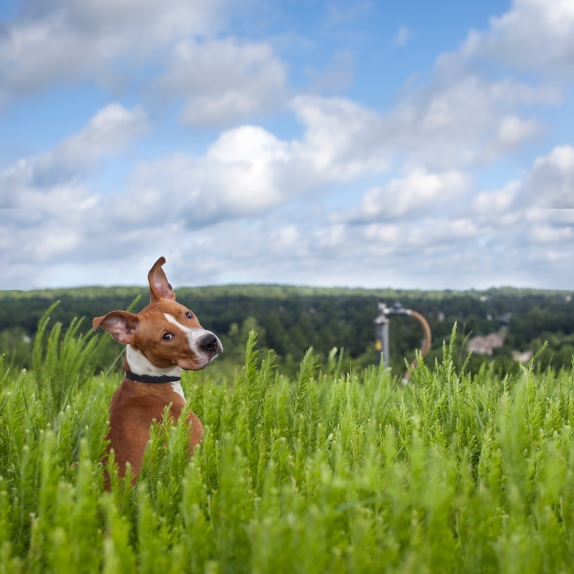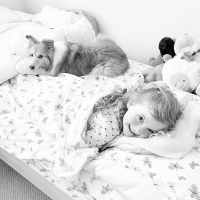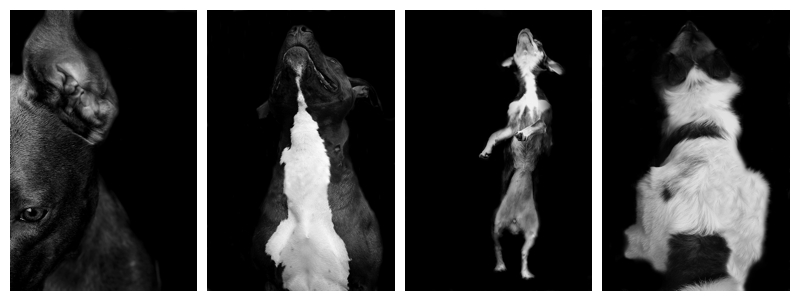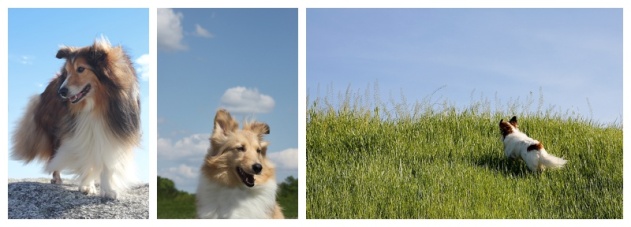Interview with Mary Shannon Johnstone, Photographer
Interview with Mary Shannon Johnstone, Photographer
Recently, I had the great honor and privilege of interviewing Mary Shannon Johnstone (“Shannon Johnstone”) a photographer and professor residing in Raleigh, North Carolina. A selection of Shannon Johnstone’s work is displayed below. Please visit Shannon Johnstone’s website to view more of her wonderful work.
KATHERINE CARVER: What were your beginnings as a photographer and when did you realize it would become your chosen form of expression?
SHANNON JOHNSTONE: I always liked photography. My Dad had a camera and I would borrow it to take random pictures. I got my first camera from a Happy Meal. It was a plastic 110 camera, about 2” long, and I used it to take pictures of family and friends. I carried it around with me everywhere and wanted to document every detail. I think I was afraid I would forget who I was and the tiny toy camera made feel secure.
KATHERINE CARVER: Where did you study photography?
SHANNON JOHNSTONE: I earned my undergraduate degree (BFA) from The School of the Art Institute of Chicago, and my graduate degree (MFA) from the Rochester Institute of Technology.
KATHERINE CARVER: How do you describe your style?
SHANNON JOHNSTONE: My hope is to continually challenge myself and try new things out so that the work doesn’t get stagnant and repetitive. In fact, when I start to feel like I am making the same picture over and over, and it feels stylistic, I try to do something different. I hope the consistency in my work comes from what I admire most in others work—creating images that are at once sad and beautiful and teach us about what this life means.
KATHERINE CARVER: Can you describe the time when you first realized that photographing was absolutely something that you had to do?
SHANNON JOHNSTONE: I started my undergraduate work at the University of Wisconsin, Madison. When I was a sophomore, Carrie Mae Weems came to speak about her work “Ain’t Jokin”. I was mesmerized. Before seeing her work I had only thought of photography as something that illustrated what the world looked like. She opened my eyes to thinking about photography as a catalyst for communication (as opposed to literally telling you something). Her work is so poetic, challenging, and lingers with you long after you see it. It is at once sad and beautiful, and teaches you what it means to be human. She ignited a spark in me and made me want to engage in this language. The next year, I transferred to The School of the Art Institute of Chicago to pursue fine art.
KATHERINE CARVER: Have you always had a passion for dogs and animals?
SHANNON JOHNSTONE: Yes, I have always loved animals, and dogs in particular. I love their earnestness and the way they freely express emotion. I promised myself when I graduated from grad school and had a stable job I would get a dog. I adopted my first dog, Lula Belle, from Triangle Beagle Rescue in 2002. It was love at first sight.
KATHERINE CARVER: What was the impetus that inspired you to begin photographing dogs in your series entitled, Landfill Dogs?
SHANNON JOHNSTONE: When I began to reflect on “Breeding Ignorance” (where Discarded Property and Shelter Life come from), I started to feel frustrated. The work did not have the impact I wanted it to. It seemed to turn as many people off as it attracted. Also, people tended to pull individual images out of context and use them to advocate for a particular position, often ones I did not agree with. I wanted to continue with the theme that thousands of animals are dying each year in our shelters, but wanted to create images that left the viewer empowered and motivated, rather than heart-broken. This is how Landfill Dogs came about.
KATHERINE CARVER: What was the impetus that inspired you to begin your two series entitled Discarded Property and Shelter Life?
SHANNON JOHNSTONE: I thought if people could just see what goes on, could see this hidden tragedy, they would WANT to spay and neuter and stop breeding pets. I thought if I made visible the euthanasia process, and the loneliness, confusion, and despair of these creatures in waiting, people would want to do better.
Instead what happened was people blamed the county shelters. This was really upsetting to me. The county is carrying out our dirty work. While the burden of ending these poor creatures lives is forced upon the shelter workers, the culpability lies with our society as a whole. In the eyes of the law, these dogs are merely excess property to be disposed of. And whether it is for profit or simply an unwillingness to alter their animal, people are free to breed as many more dogs as they like, creating this epidemic of overpopulation.
This is how Landfill Dogs came about. Reflecting this societal value, the county animal shelter falls under the same government management as the landfill. Unwanted animals are just another waste stream, destined to decompose in landfill among the rotting mattresses and rusting appliances.
KATHERINE CARVER: How have your own dog(s) influenced your work?
SHANNON JOHNSTONE: I often imagine them in the shelter. The dogs in the shelter are no different from my dogs. Often, they are even better behaved! But I imagine how my dogs would react and feel being left alone in a foreign place, spending 23.5 hours a day in small cage, with 25 other dogs barking and crying in the same room. It is overwhelming and heartbreaking.
KATHERINE CARVER: How does teaching and being a photography professor impact your own work?
SHANNON JOHNSTONE: I love talking about photography and love being part of students getting excited about making work. It makes me happy. In terms of my own work, my college (Meredith College) is extremely supportive of me pursuing my own work and scholarship. They provide me with resources, and sabbaticals, and I feel extremely lucky and proud to be at an institution that values art, research, and innovation.
KATHERINE CARVER: Where do you show/exhibit your work?
SHANNON JOHNSTONE: I have had a number of exhibitions locally (Raleigh, NC), recently at Artspace and Design Box. I also participate in group exhibitions across the country, and occasionally internationally. In October and November, my work was included in “Dogarta” at bestregARTS in Frankfurt, Germany, and “Abandoned Animals Don’t Cry” at Pier 2 Art Centere in Kaohsiung City, Taiwan.
KATHERINE CARVER: What does “being creative” mean to you?
SHANNON JOHNSTONE: I think being creative means a commitment to continually challenging yourself.
KATHERINE CARVER: What is the most challenging aspect of being a photographer?
SHANNON JOHNSTONE: I love what I do, so I consider it a blessing that I get to photograph everyday. Since I am an Associate Professor at Meredith College, and teaching is a big part of my life, I would say making the time to pursue my own work is probably the biggest challenge. Of course, sabbaticals (like the one I am on now) help with that!
KATHERINE CARVER: What inspires you to keep going and what keeps you motivated?
SHANNON JOHNSTONE: My passion for making images keeps me going. It makes me feel alive.
KATHERINE CARVER: What are the most rewarding and satisfying part about being a photographer and creating art?
SHANNON JOHNSTONE: The most rewarding is making images that inspire you. To create something that did not exist before and see that thing communicate and move other people is one of the best highs I have ever felt.
KATHERINE CARVER: What kind of patterns, rituals, and routines do you have while making your art?
SHANNON JOHNSTONE: Everyday is different. But when I shoot digitally, each night I download my pictures into a folder with the date, reformat the card, and recharge the battery, and then zip up the camera bag. I know this is really simple, but having my camera ready to go means I can think about other things that will inevitably come up.
Also, I photograph every single day. I make sure I take at least one picture every day. I truly believe if you want to be engaged with art, you need to nurture it every day. It is not something you take a vacation from. It is something you live with. I keep a digital journal with all of these photos (organized by date, and a brief comment), and I print it out as a Blurb book once a year.
KATHERINE CARVER: Looking back on your accomplishments, to date, what are you the most proud of?
SHANNON JOHNSTONE: I am most proud that my photographs are playing a part in helping shelter animals to get homes.
KATHERINE CARVER: What are you working on now?
SHANNON JOHNSTONE: I am still in the midst of Landfill Dogs. My hope is to create a second phase of the project where I visit each of the 100 county shelters in North Carolina and do a portrait there of their longest term residents.
KATHERINE CARVER: What artists inspire your work?
SHANNON JOHNSTONE: Oh, wow. There are so many. Right now I have been loving and looking at Chris Jordan, Carrie Mae-Weems, Felix Gonzales-Torres, Daniel Naude, and Richard Misrach. I have also been looking at the painter, Andrew Wyeth.
KATHERINE CARVER: How can people view and/or purchase your art works?
SHANNON JOHNSTONE: I will be having an exhibition at Artspace in Raleigh, North Carolina in January 2014. The Landfill Dogs series is editioned and has already begun being collected. For print purchases, please email me privately at info@shannonjohnstone.com.
All images are courtesy of Shannon Johnstone.
You can read additional interviews here.
























